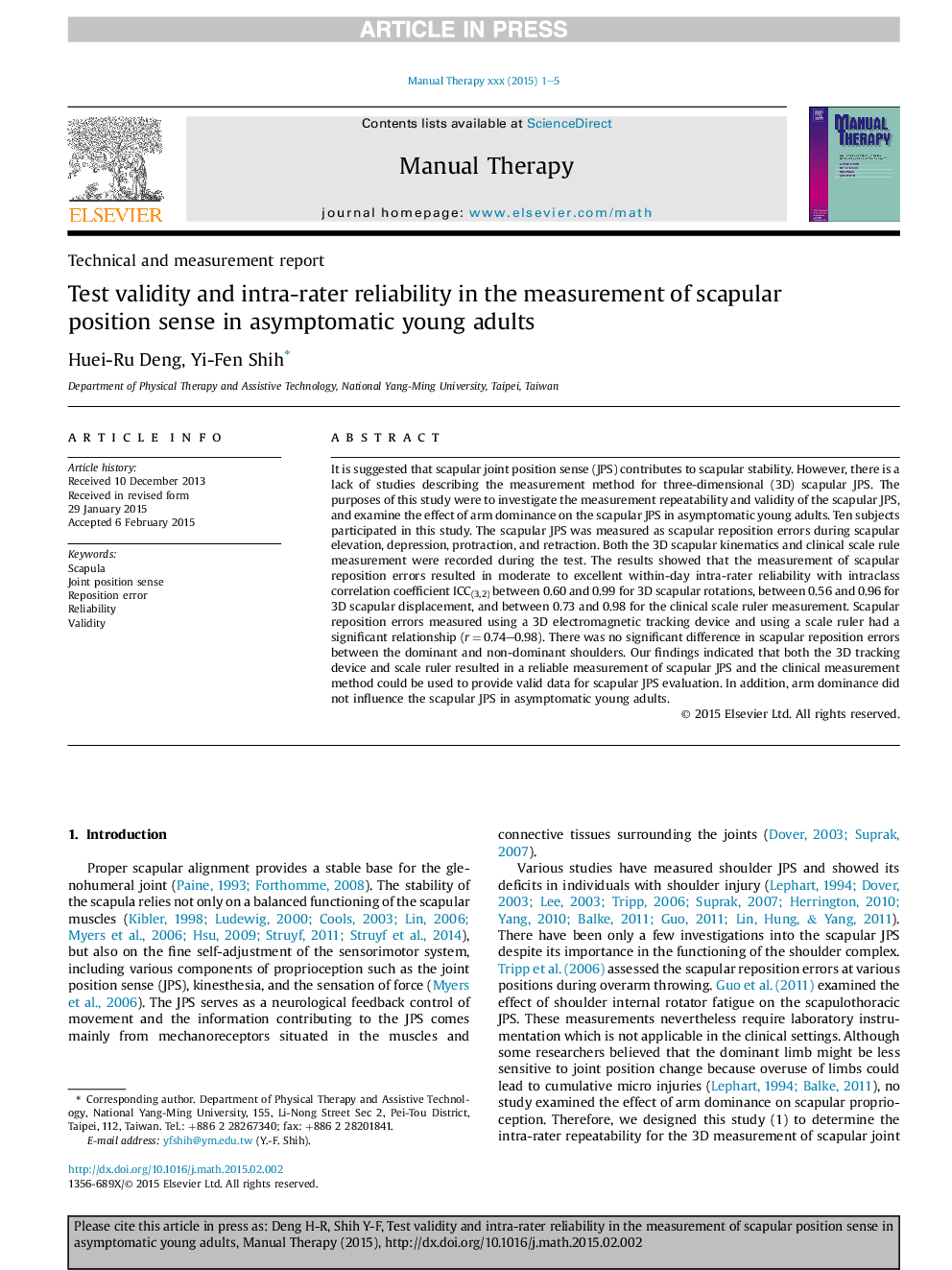| Article ID | Journal | Published Year | Pages | File Type |
|---|---|---|---|---|
| 5864899 | Manual Therapy | 2015 | 5 Pages |
Abstract
It is suggested that scapular joint position sense (JPS) contributes to scapular stability. However, there is a lack of studies describing the measurement method for three-dimensional (3D) scapular JPS. The purposes of this study were to investigate the measurement repeatability and validity of the scapular JPS, and examine the effect of arm dominance on the scapular JPS in asymptomatic young adults. Ten subjects participated in this study. The scapular JPS was measured as scapular reposition errors during scapular elevation, depression, protraction, and retraction. Both the 3D scapular kinematics and clinical scale rule measurement were recorded during the test. The results showed that the measurement of scapular reposition errors resulted in moderate to excellent within-day intra-rater reliability with intraclass correlation coefficient ICC(3,2) between 0.60 and 0.99 for 3D scapular rotations, between 0.56 and 0.96 for 3D scapular displacement, and between 0.73 and 0.98 for the clinical scale ruler measurement. Scapular reposition errors measured using a 3D electromagnetic tracking device and using a scale ruler had a significant relationship (r = 0.74-0.98). There was no significant difference in scapular reposition errors between the dominant and non-dominant shoulders. Our findings indicated that both the 3D tracking device and scale ruler resulted in a reliable measurement of scapular JPS and the clinical measurement method could be used to provide valid data for scapular JPS evaluation. In addition, arm dominance did not influence the scapular JPS in asymptomatic young adults.
Related Topics
Health Sciences
Medicine and Dentistry
Complementary and Alternative Medicine
Authors
Huei-Ru Deng, Yi-Fen Shih,
